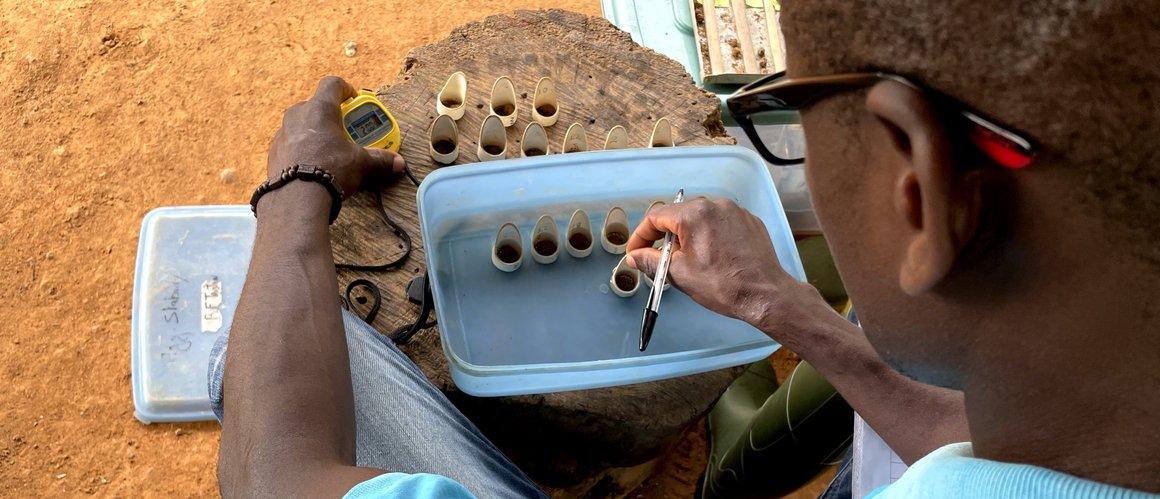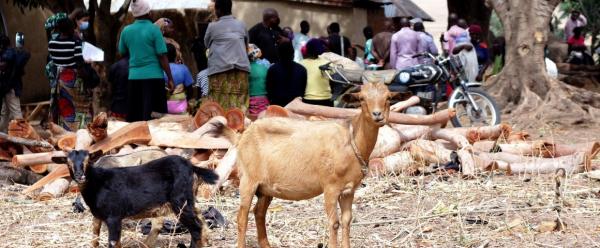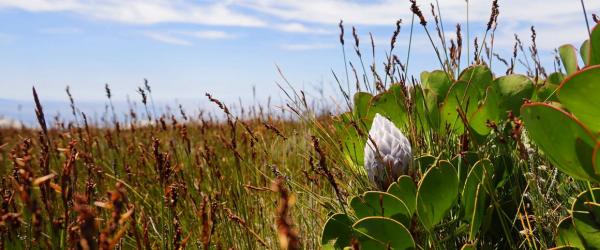Results & impact 28 October 2025
- Home
- CIRAD news
- News
- Biofunctool assesses soil health
Biofunctool®: a low-tech, low-cost field device for assessing soil health

Most Biofunctool® tests are done directly in the field © T. Perron, CIRAD
In 2018, Alexis Thoumazeau defended his PhD thesis with CIRAD and IRD. His work had been to develop a field methodology applicable to situations in the global South, to asses soil health. This is how Biofunctool® was born. "The novelty of the approach is that it measures soil functioning in relation to their biological activity, since the notion of soil health centres on their capacity to function long term", says Alexis Thoumazeau, who is now a researcher with CIRAD.
This functional approach to soil health is the one chosen in the first proposed EU soil monitoring law in July 2023. "However, the most commonly used methods are still based on stock (carbon, nitrogen, microbial biomass) indicators, which are out of step with this functionalist, dynamic vision of soil health", Alain Brauman, co-designer of Biofunctool® and ecologist with IRD, points out.
Scoring soil health for the agroecological transition
Changes in farming practices have an impact on soil health. As part of the agroecological transition, it is therefore vital to determine the impacts on soils, hence on their health.
Biofunctool® therefore comprises nine tests that generate indicators relating to three soil functions:
- four on soil structure maintenance
- three on carbon dynamics
- two on soil nutrient cycles.
"Apart from one test, which we developed, the other eight already existed when I did my thesis", Alexis Thoumazeau explains. "What was new was that we combined them in our conceptual framework and proposed a multi-criteria assessment to produce a soil health index."
Biofunctool® is suitable for comparing practices or for monitoring changes in practices in a given context over time. There are no absolute reference values. "In fact, absolute or intrinsic values for soil fertility are meaningless, since soil health is so inextricably linked to the soil-climate context", says CIRAD project engineer Jim Félix-Faure.
A low-tech, low-cost field tool
Like most field tools, Biofunctool® enables immediate discussions with farmers once the results are obtained. «"I remember one visit to a cereal producer practising conservation agriculture (no-till)", Jim Félix-Faure recounts. "Despite his demanding agroecological practices, his lowest plot was not producing. Thanks to certain Biofunctool® indicators, we quickly realized that the soil in the area was much too compacted. The solution was easy: all he had to do was to break it up!"
Biofunctool® users really appreciate these informative exchanges. Chambers of Agriculture, agricultural training organizations and technical institutes such as Terres Inovia have also shown a keen interest in the method.
Making measurements easier to ensure users adopt the tool
"To start with, we were aiming for farmers to use the tool directly. However, although the tests are not over-technical, there are a lot of them and they call for a certain amount of know-how, time, and a fair bit of equipment", Alexis Thoumazeau points out. "A test like Beerkan, which measures water infiltration rates, is easy to do, but occupies someone for almost half an hour. That's too long for an agricultural advisor and ’even more so for a farmer."
In 2022 and 2023, a small team began to concentrate on technological methodological developments aimed at improving and simplifying analysis methods, and making it possible to do them on returning from the field. For instance, the scientists have designed a low-tech system to make the water infiltration test automatic, using the Arduino open source technology and a 3D printer.
The scientists have also worked with the E-Tumba firm to develop a mobile app and a web platform to assist with field measurements and with analysing the results for various indicators. The first version of the app is now ready, and full-scale tests will be starting in the spring. The plan is to release the app and platform to the scientific community and agricultural advisors in the course of 2024.
These developments were part of a MUSE - Montpellier University of Excellence project and two Plan France Relance projects in 2022-2023, in partnership with the SCOP Sagne and E-Tumba firms.



























